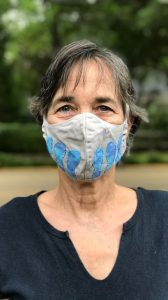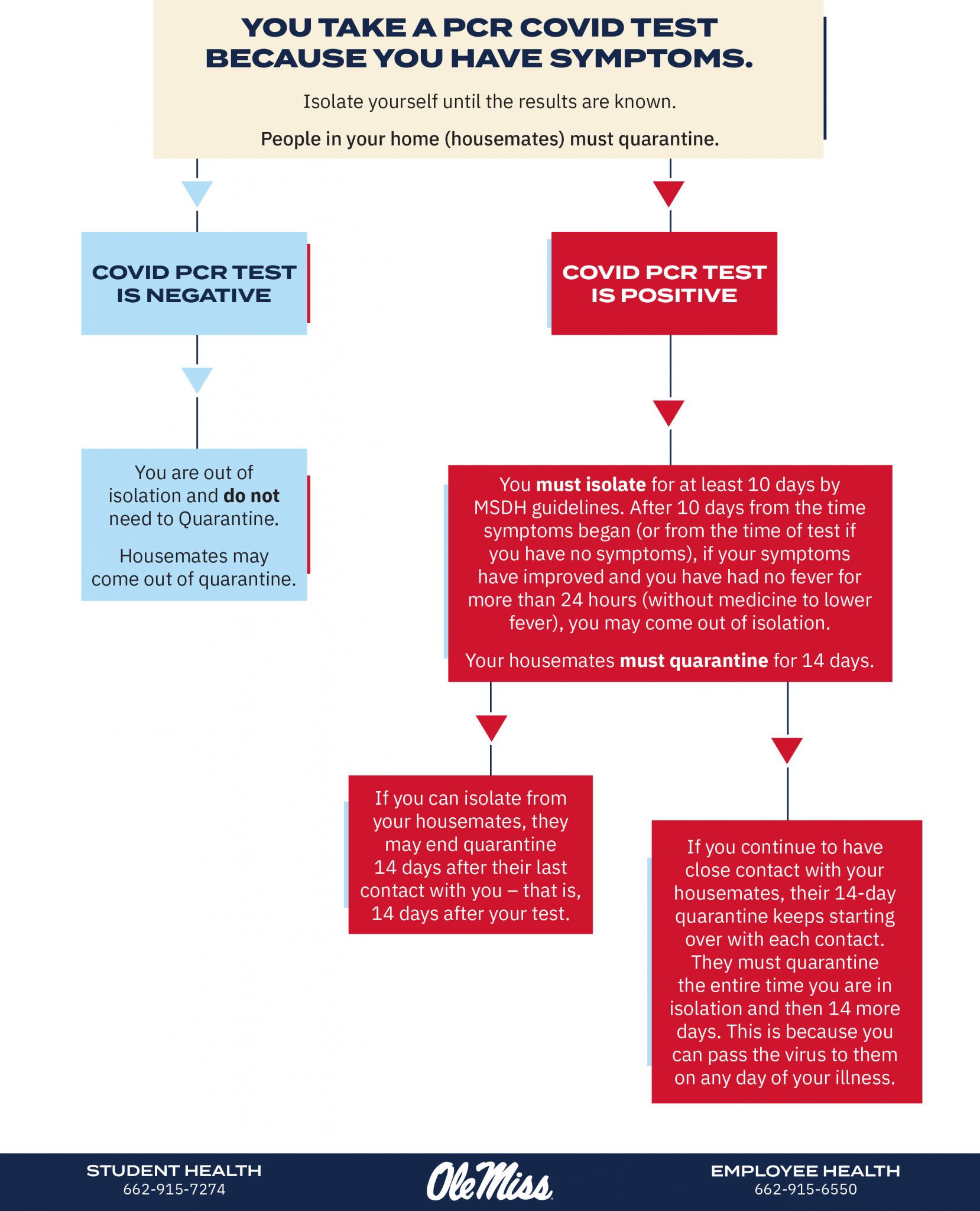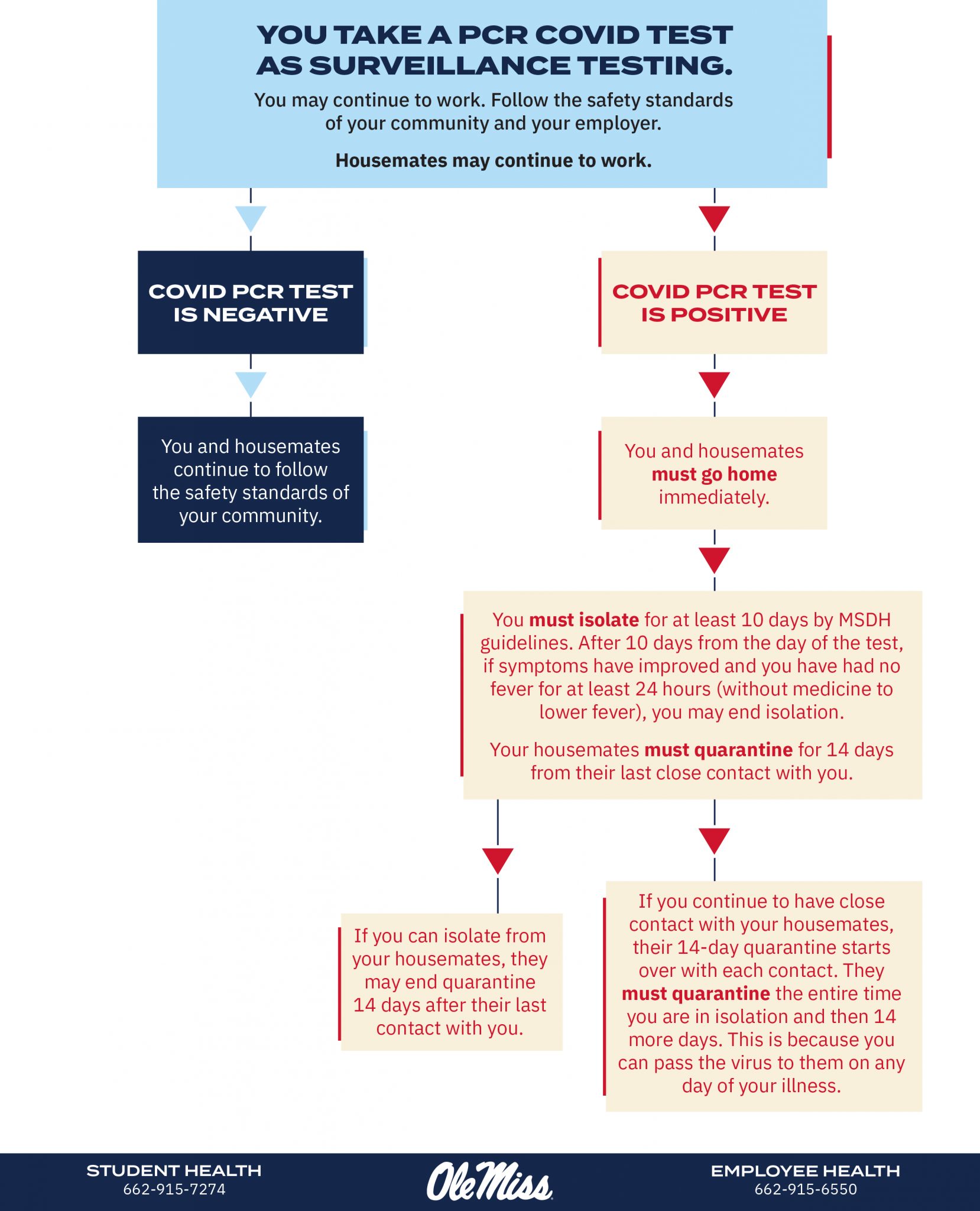Editor’s note: The graphics included in this story have been updated to reflect the latest guidance from the Centers for Disease Control and Prevention.
The COVID-19 pandemic has brought new health concerns and new ways of approaching everyday activities, complete with specific terms for these concepts. Everybody wants to stay healthy and help ensure their families and friends do so too, but doing so requires understanding exactly what is expected.
To begin the discussion, we have to define three terms. The first is “isolate.” If you have COVID-19, or if you think you might have COVID-19, you must isolate. This is what a positive person does in order not to infect other people.
It means that you stay at home, preferably in one room and one private bathroom, away from other people who live in the house with you. You should not be within 6 feet of anyone who lives in the house. If you have to be within 6 feet or you have to share a bathroom, you must wear a mask when in that bathroom or within 6 feet.
Don’t cook for others. Your food should be delivered to you in your room. This is the best way to protect your family or housemates. If you must go outdoors, wear a mask and go outdoors in your own yard when no one else is there. Please don’t go in public spaces.
The second term is “quarantine.” Quarantine means staying at home and monitoring your symptoms. It is less strict than isolating because you can still interact with other members of your family. You should not shop, and you should not be in any public spaces. If you go outdoors, it should be in your own yard, staying away from others.
Quarantine is what you do if you have been in close contact with someone who is positive for COVID-19, and you are waiting to see whether the virus was passed to you or not. The incubation period for COVID-19 is anywhere from two to 14 days, which means that you may become ill as soon as two days or as long as 14 days after contact with someone who has COVID-19.
To protect others, you have to quarantine until you know whether the virus was passed to you or not. This takes 14 days. If you must quarantine because of exposure to COVID-19, do you need to be tested for COVID? Do get tested if you have symptoms, whether those symptoms appear on day 2, day 5, day 11 or any day up to and including day 14.
If you have no symptoms, you may choose to be tested, but a negative test early in the quarantine period only means that you were negative for COVID-19 on the day you were tested. It does not mean that you will be free of symptoms the next day.
The third term is “close contact.” Close contact means spending at least 15 minutes without a mask within 6 feet of someone who has COVID-19. Close contact also includes touching, hugging or kissing someone with COVID. If you use that person’s eating utensils or if a COVID-positive person spits or coughs on you or yells in your face and respiratory droplets hit you, you have had close contact.
If you need to be tested for COVID-19, call your physician or call a testing center to discuss your symptoms or your reasons for wanting a test with a nurse or physician.
If you are tested for COVID-19 because you have symptoms or because you had close contact with someone who is positive for COVID-19, you must go home immediately after testing and stay home until you get the results of the test.
If you are tested for COVID-19 for surveillance reasons not related to exposure or symptoms, you may continue to work and live following the safety standards of your community and your employer.
I’ll say it again. If you are tested for COVID-19 because of illness or exposure, you must behave as if the test is positive and isolate yourself at home until the testing center calls you with the test results. While you are isolating, your family and housemates must quarantine until the test results are known. It may take three to 10 days for the results to come in. Tough. Stay home.
These are the rules. This is the protocol. This is what will help us keep Oxford and the university safe, and this is what gives us our best chance of getting the kids back to school. This is stopping for a red light, stopping at a stop sign, taking turns at a four-way stop. These are rules that keep society functioning.
People with COVID have different symptoms. Some people don’t feel sick at all. For some, fatigue is the overwhelming symptom. For others, it is diarrhea, nausea, headache or loss of the ability to smell or taste. For others, it is muscle aches or cough or sore throat or runny nose or chest tightness and trouble breathing.
The difficulty breathing may not be apparent at first but may show up about a week into the illness. People who have COVID don’t seem to feel as short of breath as do other people who have similar X-ray findings or similar oxygen levels in the blood.
For someone with COVID, low oxygen levels in the blood might show up as increased fatigue rather than as shortness of breath. Treat this by lying on your stomach, known as “proning,” which seems to help get more oxygen into the body. Avoid undue exertion. Keep in touch with your doctor.
If any symptom becomes too scary, or if you have trouble staying awake, you get confused or your fingers or lips look blue, call the emergency room to say that you have COVID and that you are on your way to the ER to be evaluated.
If you are positive for COVID-19 but not so sick that you have to be hospitalized, when can you come out of isolation? According to the Mississippi State Department of Health, you may end home isolation when at least 14 days have passed since your symptoms first began, your symptoms have improved and you have had no fever for at least 24 hours without using medicine that lowers temperature.
If you are an essential worker and your employer agrees, you may return to work 10 days from the day your symptoms started – or from the date of your positive test if you have no symptoms – if you have been fever-free for at least 24 hours and you have no other symptoms.
The following flow charts show what you and your family should do in different situations, after you take a polymerase chain reaction, or PCR, COVID-19 test.
The PCR tests are more accurate than the rapid antigen tests, but neither test is perfect for either positive or negative results. The PCR tests look for evidence of the coronavirus’ RNA in the person’s nose, nasopharynx or throat. The antigen test looks not for the RNA, but for the coronavirus’ surface protein.
The PCR results come back in three to 10 days. Initially we got these results in one to two days, but now the laboratories are overwhelmed with so many tests, they simply cannot run the tests that quickly.
The rapid tests give results the day of testing, and you can believe the rapid test if it says you are positive, but you cannot trust a negative rapid test result fully. The rapid test has a problem with false negatives, with up to one in five negative results being incorrect.
This means that 80% or more of the negatives from rapid tests truly are negative, but up to 20% of the negatives from those tests truly are positive. The Food and Drug Administration recommends that a person with a negative rapid test should then take a PCR test.
The last flow chart explains what to do after taking a rapid COVID test.
Dr. Jean G. Gispen is a staff physician at the employee health center within University Health Services at the University of Mississippi.




